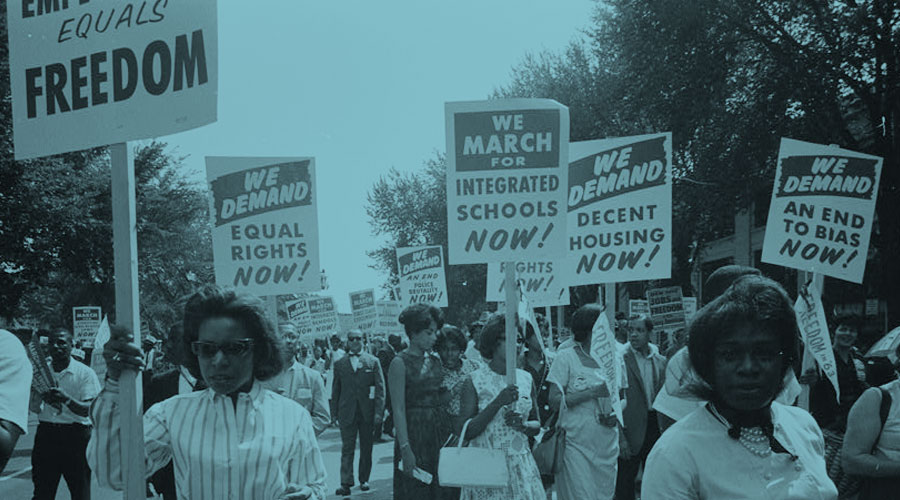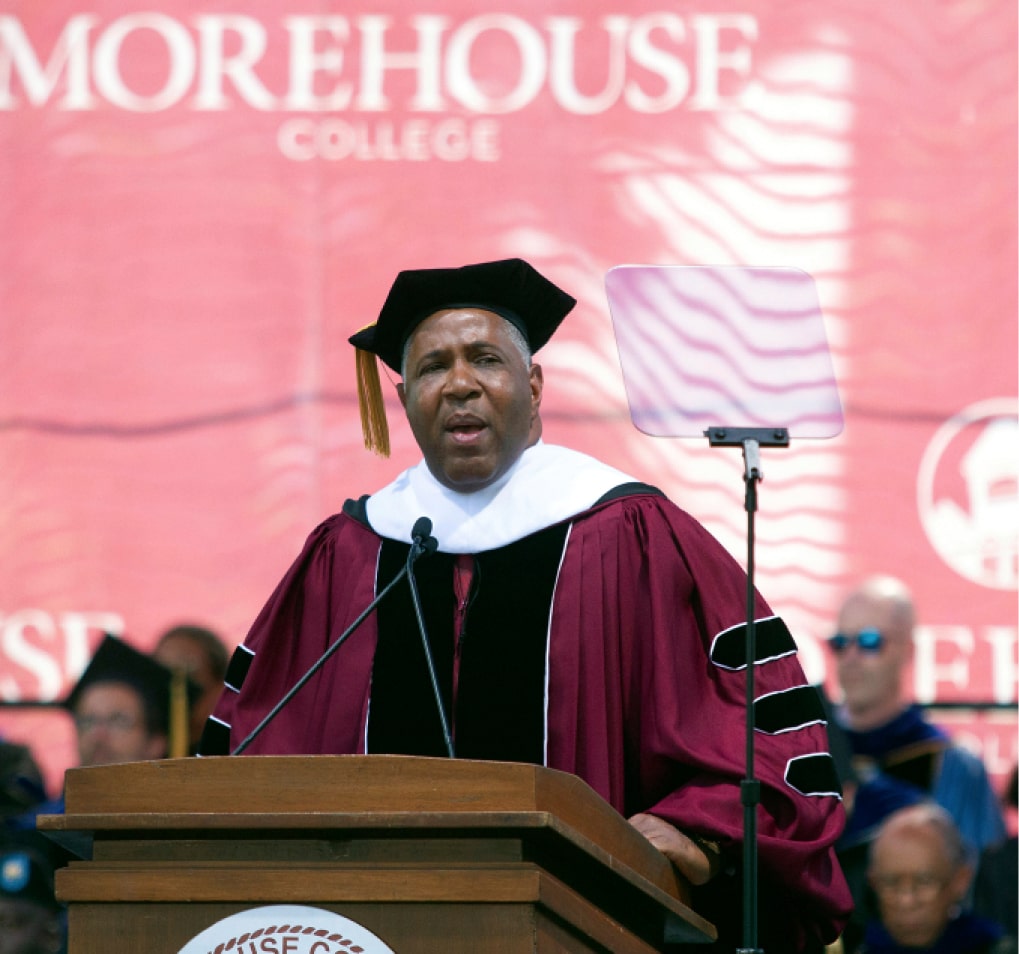Key Takeaways:
- Systemic racism in education refers to the entrenched racial disparities in systems and policies that negatively impact the U.S. education system.
- Systemic racism permeates almost every aspect of the U.S. education system. Common examples include inequitable funding, a lack of diverse curricula and an underrepresentation of teachers from different cultures.
- To fix systemic racism in education, government officials need to implement comprehensive reforms and policy changes. However, there are steps that educators and caregivers can take to mitigate it.
Table of Contents
From an early age, many of us are told that the path to success starts with doing well in school. If you work hard enough and do your best, you will be rewarded. However, this promise is more of a fantasy than a reality for some people, especially for those from underrepresented communities.
This is the direct result of an issue that has permeated the U.S. education system since the country’s inception: systemic racism. The obstacles created by systemic racism in the education system have negatively impacted generations of students from underrepresented communities. Many of these barriers continue to limit the success of students from marginalized groups.
Below, we explore what systemic racism in education is, including a brief history. In addition, we highlight common examples of systemic racism in education and solutions.
What Is Systemic Racism in Education?
Systemic racism in education explains the embedded racial inequities that adversely affect the U.S. education system. To better understand, it may help to break down how racism and systemic racism are connected.
Racism refers to the oppression of people based on race on an individual basis. Systemic racism is that same oppression but extended beyond individuals. Essentially, racism becomes ingrained in the systems and organizations within society. Systemic racism is the reason organizations and systems mirror individual racism.
Systemic racism in education includes any education-related systems, laws, policies, actions or beliefs that accept and continue the unfair treatment of people from underrepresented groups. These deeply rooted issues manifest in barriers that make the road to success harder for marginalized communities. Some of these barriers include disparities in funding, resources and access to quality education.
The History of Systemic Racism in Education
The history of systemic racism in education dates back hundreds of years. Centuries of discrimination led to the formation of separate school systems. Schools developed for Black Americans, for example, commonly received less funding than schools with primarily white student populations. In addition, schools for marginalized groups often faced overcrowding, a lack of supplies and inequitable pay for education professionals.
These disparities negatively impacted the educational opportunities available to Black students. According to the U.S. Census Bureau, just 7% of Black Americans earned a high school degree in 1940 compared with the national average of 24% at the time.
The Civil Rights Movement of the 1960s led to the desegregation of public schools through measures like court-ordered busing that forced school districts to diversify. Cases like Brown v. Board of Education were major civil rights victories for Black Americans, but implementing the new laws was commonly met with resistance. Even after schools were integrated, inequitable funding, resources and school content continued to harm opportunities for Black students to gain equitable learning experiences. Many of these issues remain problematic for students from underrepresented communities today.
Five Examples of Systemic Racism in Education
Systemic racism impacts nearly every aspect of the U.S. education system. Examples of systemic racism in education include unequal funding, a lack of diverse curricula and an underrepresentation of Black and Brown teachers, among others. Ahead, we discuss examples of systemic racism in education in more detail.
1. Unequal Funding
School funding is essential to creating a safe and well-rounded educational experience for students. Disparities in school funding throughout the U.S. is an issue for many schools that primarily serve students from underrepresented communities.
Public school funding often comes from property taxes, which means schools in wealthier neighborhoods are usually funded better than schools in poorer areas. Black and Latino households hold less than 3% of the wealth in the U.S., which usually results in less funding for schools in Black and Latino neighborhoods.
According to data from EdBuild, predominantly nonwhite schools across the U.S. receive $23 billion less annually than majority-white districts. Schools with less funding are more likely to be understaffed and have fewer resources, making them more likely to underperform compared to schools that serve a primarily white student population.
2. Unfair Disciplinary Actions
Students from underrepresented communities, particularly Black students, commonly face disproportionate amounts of disciplinary action compared with their white peers. According to research published by the American Psychological Association, these punishments can harm a student’s educational experience and have a negative impact on their future success.
A study conducted by the same organization found that 26% of Black students were suspended for small infractions over a three-year period. In the same time frame, just 2% of white students were suspended for similar offenses. The implementation of zero-tolerance policies in U.S. public schools led to an increase in these disciplinary disparities.
These policies stem from the Gun-Free Schools Act (GFSA). Originally, the act was created to outline punishments for bringing a firearm to school, but it led to the formation of zero-tolerance policies to include other transgressions. These policies have exacerbated the school-to-prison pipeline. This pipeline explains the policies or systems that inequitably lead students from underrepresented communities into the criminal justice system.
The discriminatory use of these measures and calls to law enforcement make this problem worse. When students from marginalized communities are unfairly impacted by these policies, it can set them up for long-term failure.
3. A Lack of Diverse Curricula
It is integral that school materials are as diverse as the population they serve. Providing students with materials that reflect their culture and that of their peers nurtures a sense of inclusion. In addition, it acknowledges the presence of diverse identities and cultivates an educational setting where every student can excel. While, in most cases, curriculum materials have become more diverse, and teachers have adopted new teaching practices in the last few decades, studies show that significant disparities still remain.
In recent years, government officials have developed and passed policies that dictate teaching practices and what materials teachers can use in classrooms. Many of the materials that teachers are restricted from using include mentions of race. Data published by book publisher Lee & Low indicates that just 13% of children’s books depicted diverse content in the last 20+ years. Over the same period, the research also shows that only 7% of authors were people from underrepresented communities. It also highlighted the fact that required school reading lists are primarily comprised of classic books. Many of these classics primarily depict the white middle-class to upper-class experience.
This lack of diversity is not limited to children’s books. A study highlighted by Edutopia, shows that the pictures used in U.S. history textbooks primarily depict white, European Americans, sometimes more than 80%. By comparison, the research shows that people from underrepresented communities are barely represented. To put it into perspective, the representation of some racial groups in the same textbooks studied was as low as 1%.
4. Racial Achievement Gaps
While there has been progress in reducing learning disparities since the Civil Rights Movement, there is still much work to be done to bridge the racial achievement gap. In simple terms, the racial achievement gap is a way to compare the educational and professional success of one racial group with another. The primary way the U.S. gauges growth is through standardized tests administered by the National Assessment of Educational Progress (NAEP).
NAEP, also known as “the nation’s report card,” tests the academic capabilities of a sample of students in different age groups every few years. According to an analysis done by Stanford CEPA, the achievement gaps have shrunk significantly since the 1970s. Progress stagnated, and achievement gaps grew in the mid-1980s and into the 1990s. But, recent data shows that the achievement gaps continued to shrink again after the 1990s.
During the 2022-2023 school year, the National Center for Education Statistics (NCES) measured the skills in reading and math of 13-year-old students. The math results revealed that Black students scored a 13-point decrease compared with the six-point decrease of their white peers. This decrease boosted the Black-white achievement gap from 35 points in 2020 to 42 points in 2023.
5. Underrepresentation of Black and Brown Teachers
Having a diverse teaching staff offers many benefits to students of all racial backgrounds. A summary of a study conducted by the Learning Policy Institute found positive impacts for students from underrepresented communities who have teachers who look like them. Some of these benefits include better academic performances, better reading and math scores, fewer absences and higher graduation rates.
Today, there is a significant lack of Black and Brown teachers in classrooms throughout the U.S. Many attribute this disparity to the Brown v. Board decision. While a crucially important and precedent-setting case, it significantly impacted Black teachers.
When schools were ordered to integrate in 1954, schools for Black students were shut down. As a result, thousands of experienced and credentialed Black teachers were fired or pushed to resign. Since the decision, the Black teacher and education leadership pipeline never fully rebounded.
Before the Brown decision, Black teachers accounted for 35% to 50% of public school teachers in the 17 states that had Black-only schools. Data reported by TIME in January 2022 shows that just a little more than 20% of U.S. public school teachers identify as people from underrepresented communities. Of that percentage, only 7% classified themselves as Black.
How to Change the Course of Systemic Racism in Education
All forms of systemic racism, including systemic racism in education, are deeply ingrained in U.S. social, economic and political systems. Given it is such a multifaceted challenge, it requires comprehensive reforms and policy changes to dismantle.
Federal and local officials and school district leaders can certainly seek remedies in their official capacities. But, caregivers and education professionals can also take steps toward progress. Some of these steps include the following:
- Caregivers and educators should make a concerted effort to build genuine relationships to keep track of how students are doing.
- Education professionals should be required to complete anti-bias training. This can help mitigate discrimination or assumptions about different cultures.
- Caregivers and education professionals should advocate for students from underrepresented communities.
- Families and educators need to advocate for leadership diversity within schools and school districts.
To learn more about other important topics, follow Robert F. Smith on LinkedIn. And see what Smith has to say about systemic racism in the video below.







